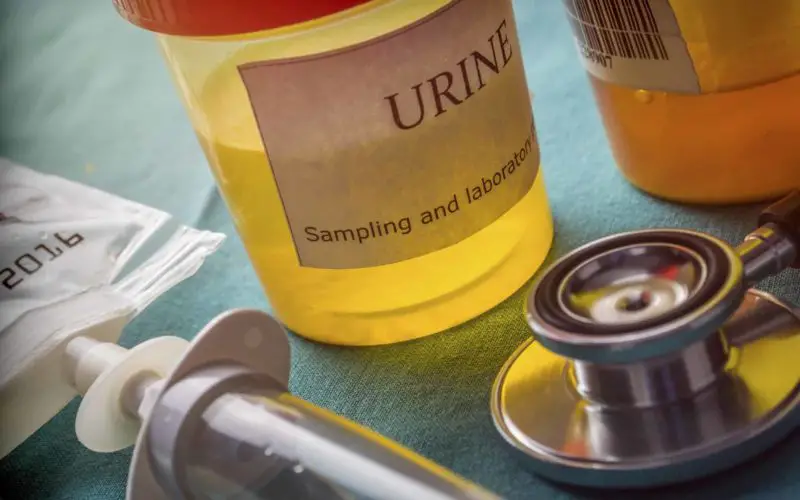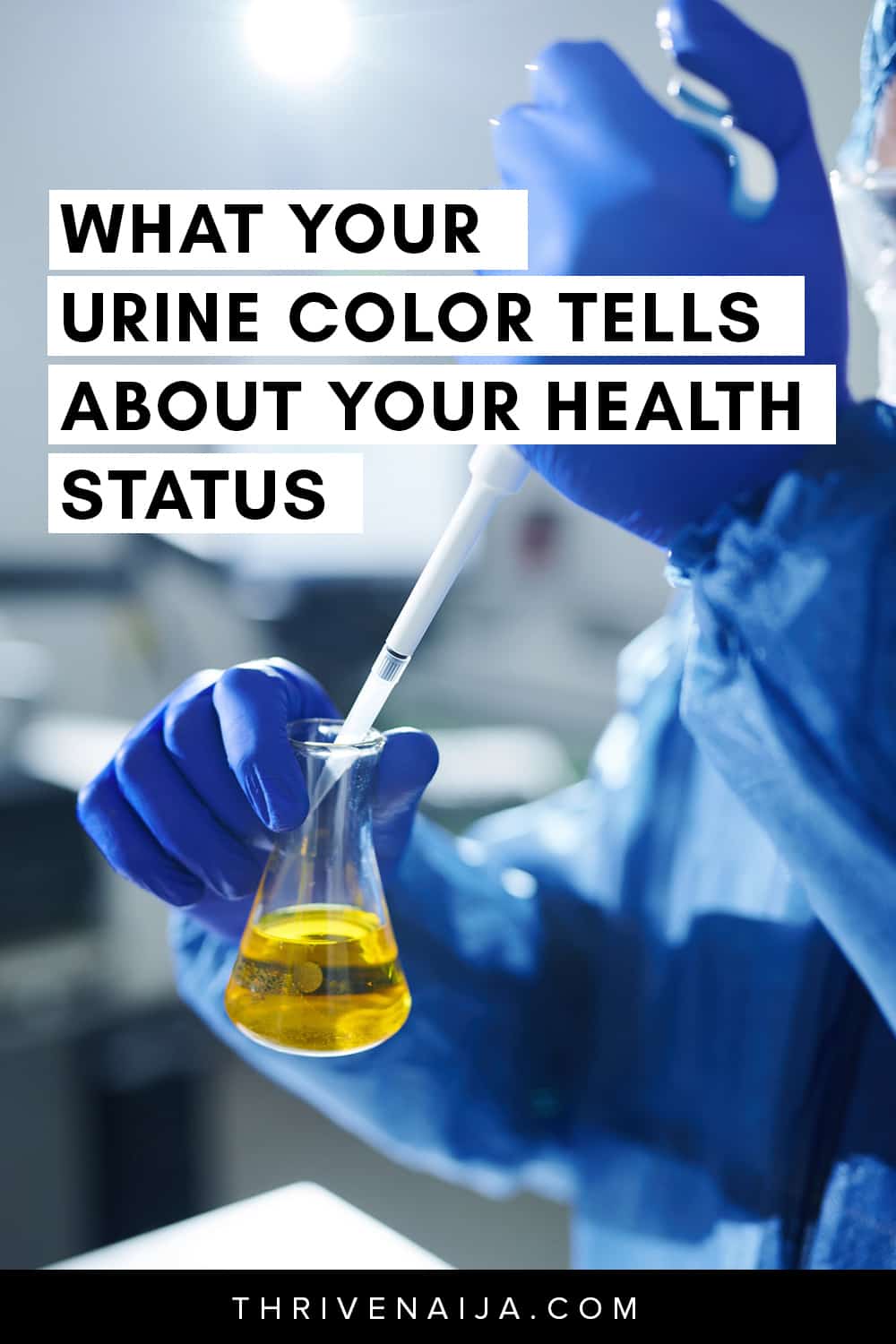You will notice that most doctors recommend urine tests when you go for a medical checkup. Its called a urinalysis. This is because your urine tells a lot about what is going on on your inside. The physical and chemical characteristics of your urine give a true indication of what is wrong with your health.
As a matter of fact, your urine color, odor, and consistency tell a lot about your well-being and health status.
Urine is made up of mostly water and a host of other compounds like chloride, sodium, potassium, urea, and creatinine as well as various organic and inorganic compounds.
Any slight imbalance in the concentration of these compounds can affect the color, consistency, and odor of your urine. A transparent or pale straw yellow color urine is an indicator of good health and a properly hydrated body.
Urochrome (urobilin) is the chemical that gives urine its characteristic yellow color. This yellow coloration is formed when the kidneys properly process waste products for excretion. When you take in a fluid, it dilutes the yellow pigment in the urine, so the more fluid you drink, the clearer your urine looks.
So, when you drink too little water, the body becomes dehydrated and the urine becomes concentrated giving it a deep yellow coloration. If your urine takes on other uncommon and unusual color, it could be an indication of underlying health condition. This article elucidates different urine colors and what it tells about your health status.
1. Cloudy or Murky
If your urine appears cloudy or murky, it could be an indication of kidney stones or urinary tract infection (UTI). If the underlying health condition is UTI, the urine will have pungent ammonia, foul or even slightly sweet odor. The bacteria responsible for the infection produces the fouls smell as a by-product.
Additionally, if you experience symptoms like an urge to pee frequently, but passing out only small amount of urine with pain or burning sensation when you urinate, you need to get examined for UTI.
When suffering from a UTI, consult your physician for proper diagnosis and treatment. You may need antibiotics to clear up the infection and prevent further re-occurrence.
What’s more, an excess of certain minerals such as phosphorus or calcium may also be responsible for white or milky colored urine. Foaming and fizzing urine may also be an indication of excess protein or kidney problem.
If you experience these symptoms, consult your doctor immediately.
2. Orange
If your urine has a light orange color, you shouldn’t worry that much. It could be a sign of mild dehydration.
Other causes could be consuming a lot of beta-carotene rich foods, which is excreted via your urine. Supplements like vitamin B complex and other blood thinners could also be responsible for the orange-yellow coloration of your urine.
However, if you notice a fluorescent orange color, it could be an indication that something is wrong with your bile ducts or liver.
Why is that so, high levels of bilirubin due to liver inflammation, abnormalities of the liver cells or obstruction of the bile ducts can change the color of your urine to orange.
It is also worthy of note that; orange-colored urine is a possible sign of jaundice. This is usually accompanied by pale stools and yellow discoloration of the skin and eyes. If you notice any of these symptoms, see your doctor immediately for diagnosis and treatment.
3. Red or Pink
If your urine has a shade of red or pink, it could be due to a variety of causes.
The first point of call could be that you ate just a few hours back. Some foods like carrots, beets, blackberries, rhubarb can give your urine a pinkish-red color.
Some of the compounds give color to these foods and are excreted in the urine. If this is the case, your urine should be back to its normal colors within a few days.
Also, medications taken to treat tuberculosis can give the urine a red coloration. However, if the red or pink color persists, it could indicate a tumor in the kidneys or bladder. In addition, if you notice blood in your urine, it could be a sign of kidney stones or UTI. It could also indicate problems with the prostate or mercury poisoning.
It is best to visit your doctor if your urine color is pink or red.
4. Neon or Dark Yellow
A well-hydrated body should have transparent yellow urine, but having vibrant, fluorescent or dark yellow urine is not a good sign.
If your urine is amber or honey-colored, it could be an indication that you are not drinking enough water. In addition to dehydration, certain medications and supplements or vitamin B pills can cause this dramatic change in urine color.
However, if you are not taking any medicines, supplements or vitamins that may cause the dark yellow color and an increase in your water intake does not change the color of your urine, then it may be due to some underlying health condition.
Some of these conditions could be blood in the urine (hematuria), hemolytic anemia, and hepatitis.
5. Brown
Dark brown or cola-colored urine can be due to diet, medication or certain health issues. Eating a large amount of aloe vera, fava beans or rhubarb can change your urine color to brown.
Some drugs such as antimalarial drugs, laxatives, and muscle relaxants can also cause this change in urine color. Muscle injury due to extreme exercise could lead to a rare health condition called rhabdomyolysis, which can change your urine color to dark brown.
In addition to these, certain kidney and liver disorders like liver cancer, cirrhosis, and acute hepatitis can give your urine a dark brown color.
This mainly occurs due to excessive secretion of bilirubin from the liver into the urine. Sometimes, brown urine could be related to porphyria, a rare, inherited disorder of the red blood cells. If your urine out of a sudden turns brown, consult your physician immediately for diagnosis.
6. Green
Eating some foods like asparagus can change the color of your urine to a greenish color. Green beer, artificial food coloring, and black licorice can also cause this green coloration of urine.
Also, some medications can cause your urine to turn green, but this is only if such medication contains dyes. Diarrhea can also give a greenish tint to your urine color.
Furthermore, green urine color can be a pointer to a specific form of a UTI called a Proteus infection. The bacteria responsible for this infection can also cause kidney stones, so don’t hesitate to visit your doctor.
7. Blue
Though this is very rare, however, some people may notice a bluish tinge in their urine.
It could be due to a rare genetic health condition known as hypercalcemia (high concentration of calcium in the blood). Also, dyes can cause your urine to have a bluish tinge, but this only occurs if you have a high concentration of dye.
Any medication that contains a blue dye could also contribute to this coloration.
8. Colorless
If your urine is colorless, it could be a sign of over-hydration, meaning you are drinking too much water.
Drinking excess water can disturb the electrolyte balance in your body. Also, excessive alcohol may also cause your urine to be absolutely transparent, as it is a diuretic
However, if you are experiencing frequent urination with clear urine even when not drinking enough water, it could be a sign of diabetes.
Read next: Type 2 Diabetes Causes: 10 Risk Factors For Type 2 Diabetes.











